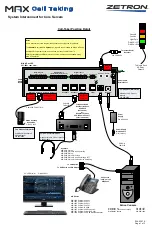
The power and signal pads on the
PCB conform to the FuzzDog
Direct Connection format, so can
be paired with the appropriate
daughterboard for quick and easy
offboard wiring. However, you
can’t use a daughterboard AND
have a flashing LED.
Be very careful when soldering
the LED and transistors. They’re
very sensitive to heat. You should
use some kind of heat sink (crocodile clip or reverse action tweezers) on each leg as you solder
The long leg (anode) of the electrolytic capacitors go into the square pads.
You should solder all other board-mounted components before you solder the pots. Once they’re in
place you’ll have no access to much of the underside of the board.
Snap the small metal tag off the pots so they can be mounted flush in the box.
If your pots don’t have protective plastic covers you should place a strip of thick card between them
and the board when soldering to keep them a good distance from the pcb to avoid shorting other
components.
Pots mount on the back side of the board. You can use vertical-mount pots or just wire up ‘normal’
ones. It’s a good idea to place the pots in their holes in the enclosure when you’re soldering them in
place on the PCB. That way you know they’re going to line up ok. Best way to do it is to solder a
single pin of each pot in place, then do a visual check to see that they’re all sitting at the same
height. If not, melt the joints and readjust any that are off.
The bottom of your board should look like this >>>
FLASHING LED?
Yes, you can have the LED flashing to indicated the
rate of the trem. Unfortunately it isn’t possible to
wire this configuration using the daughterboard.
Follow the Flashing LED footswitch wiring
diagram instead. If you want the flashing LED, use
a 10K resistor for R8. If you want to go for a static
LED, use a 15K for R8 and jumper the L+ and L-
pads together.
Once your circuit is fully assembled you should adjust T1 until you get approx 4.5V at the test point.
This is biasing Q1. If you don’t have a multimeter (why not? they’re real cheap) you can simply
adjust T1 until you get a trem effect going.
PC
B
La
yo
ut
©
20
15
P
ed
al
P
ar
ts
L
td
.

























